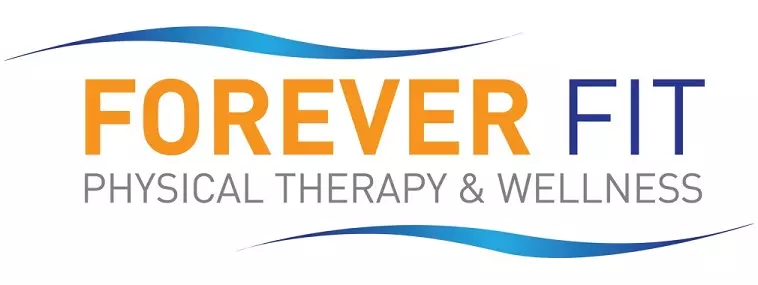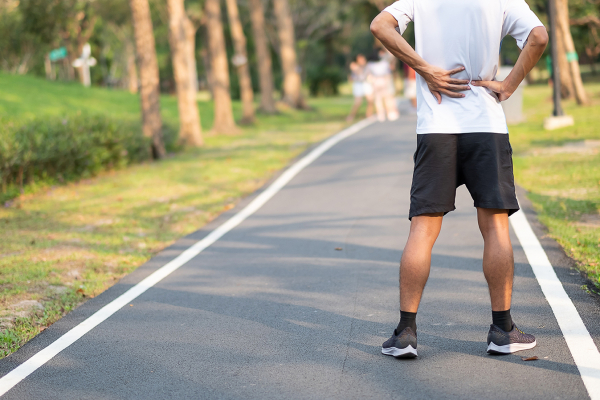Lower back pain is one of the most common complaints that lead people to go to the doctor. It is estimated that up to 90% of people will experience lower back pain in their life at some point. Lower back pain can be something minor or it could be indicative of a more serious condition. One kind of lower back pain is lumbar radiculopathy. This condition can also be known as sciatica and is due to the compression or inflammation of the sciatic nerve. It can affect up to 5% of the population.
Signs and symptoms of lumbar radiculopathy
The most common symptoms associated with lumbar radiculopathy, or sciatica, is the radiating pain that originates in the lower back and can travel down one or both legs. This pain can range from mild to severe. Signs and symptoms of lumbar radiculopathy can include:
- Tingling in back, hip(s), leg(s) foot/feet.
- Radiating pain.
- Numbness in back, hip(s), leg(s) and foot/feet.
- Shooting pain.
- Muscle weakness.
- Movement issues.
- Limping when walking.
A doctor or physical therapist can do a thorough evaluation, including your health history to make a diagnosis. Further testing may be ordered to rule out any other potential issues.
Potential causes of lumbar radiculopathy
Lumbar radiculopathy is caused by issues affecting the sciatic nerve. Potential issues behind your lumbar radiculopathy can include:
- Spinal stenosis — Spinal stenosis is a condition where the spinal canal becomes narrowed due to degenerative changes or age. This narrowing then puts pressure on nerves, resulting in lumbar radiculopathy.
- Herniated discs — One of the common causes of lumbar radiculopathy, a herniated disc occurs when a disc slips out of place or is damaged and presses on nerves.
- Bone spurs — Bone spurs are when extra bone growth occurs. This can happen in the spine due to inflammation from osteoarthritis, trauma or other degenerative conditions.
- Infection or other growths — Occasionally, infections in the spine or even cancerous/noncancerous growths in the spine may cause pressure against the nerves of the spine, including the sciatic nerve.
- Myelopathy — Occasionally, lumbar radiculopathy can be accompanied by myelopathy. This is a compression of the spinal cord. Herniated discs can then press on the spinal cord as well as the nerves. If the spinal cord is involved, symptoms can be more severe.
- Spondylolisthesis — This condition is when a spinal vertebra slides forward into another, causing nerves to become pinched or compressed.
- Degenerative disc disease — Degeneration in the discs can occur due to wear and tear or aging. This degeneration can lead to nerve compression.
- Trauma or injury — Trauma or injury to the lumbar spine can cause compression in the nerves.
Treatment options for lumbar radiculopathy
Depending on the severity of your condition, your doctor may recommend a variety of treatment approaches including:
- Medication — Over-the-counter or prescription medications may be recommended to help with inflammation, pain or other symptoms. These can include over-the-counter nonsteroidal anti-inflammatory drugs (NSAIDs), opioids or muscle relaxers.
- Physical therapy — Physical therapy is an effective and noninvasive treatment approach to help strengthen your muscles, reduce your pain and potentially help prevent further damage.
- Surgery, in severe cases — In severe cases of lumbar radiculopathy, surgery may be needed to help relieve symptoms. If surgery is needed, physical therapy can be a beneficial part of your surgical rehabilitation and recovery.
Physical therapy exercises for lumbar radiculopathy
A physical therapist has the expertise and training needed to help you address the symptoms of your lumbar radiculopathy. They may recommend a variety of treatments that can include exercises to help relieve your pain. Physical therapy exercises that may be beneficial in helping your lumbar radiculopathy can include:
- Prone press-up — Lie on your stomach with a pillow under your abdomen if needed for comfort. Place your hands palms down next to your shoulders and gently press your torso away from the bed or floor. Only press up as far as you can without increasing your pain. Hold for a second or two and then slowly return to the starting position. Repeat as directed by your physical therapist.
- Pelvic tilt — Lie on your back with your knees bent and your feet flat on the floor. Contract your abdominal muscles, pushing your lower back flat to the floor. Hold this stretch for a few seconds and then release. Repeat this exercise as your physical therapist directs.
- Cat-cow stretch — While on your hands and knees, gently arch your back upward (like an angry cat) and then slowly release it down (like a cow). Repeat this exercise as directed by your physical therapist.
- Calf stretch — Facing a wall with your hands flat against it, extend one leg straight behind you with your heel flat on the floor. Gently bend your other leg in front of you. Lean into the wall until you feel a light stretch in your back calf muscle. Repeat this stretch on each calf muscle as directed by your physical therapist.
- Lumbar rotation stretch — On the floor, lie on your back with your knees bent. Gently rotate your knees to one side and hold for several moments. Shift your knees to the other side and hold again. Repeat this exercise as directed by your physical therapist.
- Hip flexor stretch — Lie on your back on the floor. Lift one leg up, bending at the knee, and grab your thigh with your hands. Keep the other leg flat on the floor. Pull your knee close to your chest until you feel a light stretch in your upper thigh and hip of the leg still on the floor. Hold the stretch for several moments and then release. Repeat with the other leg. Continue this stretch routine as many times as directed by your physical therapist.
Working with a physical therapist can help ensure that you are performing these exercises correctly so that you benefit from them without risking further injury or damage. Lumbar radiculopathy can respond well to conservative treatments such as PT, and symptoms can often improve within six weeks to three months.
Forever Fit can help you address the struggles you are experiencing from lumbar radiculopathy
Forever Fit Physical Therapy & Wellness can help you address your lumbar radiculopathy that is keeping you from your best life. It is a painful condition but is treatable. Our expert licensed physical therapists can help you explore the range of options that can be beneficial in helping to relieve the symptoms you are experiencing.
Contact our team today for more information or to schedule an initial appointment.

